Capacitor-start And Capacitor-run Motor
Capacitor-start and Capacitor-run Motor:
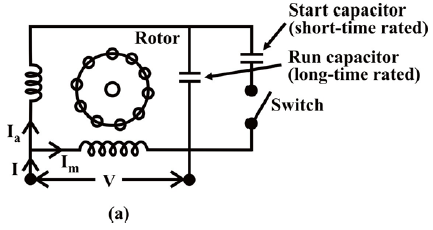
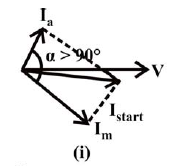
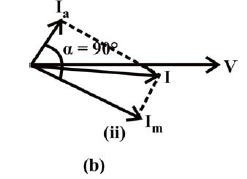
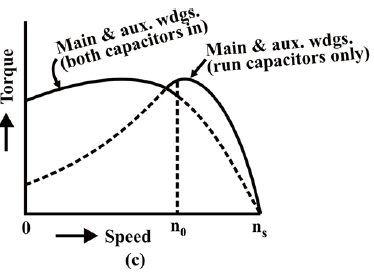 fig (A)
fig (A)
In this motor (Fig. (A)a), two capacitors − for starting, -Cs and Cr for running, are used. The first capacitor is rated for intermittent duty, as described earlier, being used only for starting. A centrifugal switch is also needed here. The second one is to be rated for continuous duty, as it is used for running. The phasor diagram of two currents in both cases, and the torque-speed characteristics with two windings having different values of capacitors, are shown in Fig. (A)b and Fig. (A)c respectively. The phase difference between the two currents is (φm φa>90o) in the first case (starting), while it is 90o for second case (running). In the second case, the motor is a balanced two phase one, the two windings having same number of turns and other conditions as given earlier, are also satisfied. So, only the forward rotating field is present, and the no backward rotating field exists. The efficiency of the motor under this condition is higher. Hence, using two capacitors, the performance of the motor improves both at the time of starting and then running. This motor is used in applications, such as compressor, refrigerator, etc.
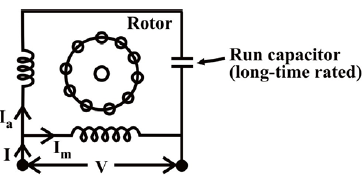 fig (B)
fig (B)
Beside the above two types of motors, a Permanent Capacitor Motor (Fig. B) with the same capacitor being utilised for both starting and running, is also used. The power factor of this motor, when it is operating (running), is high. The operation is also quiet and smooth. This motor is used in applications, such as ceiling fans, air circulator, blower, etc.